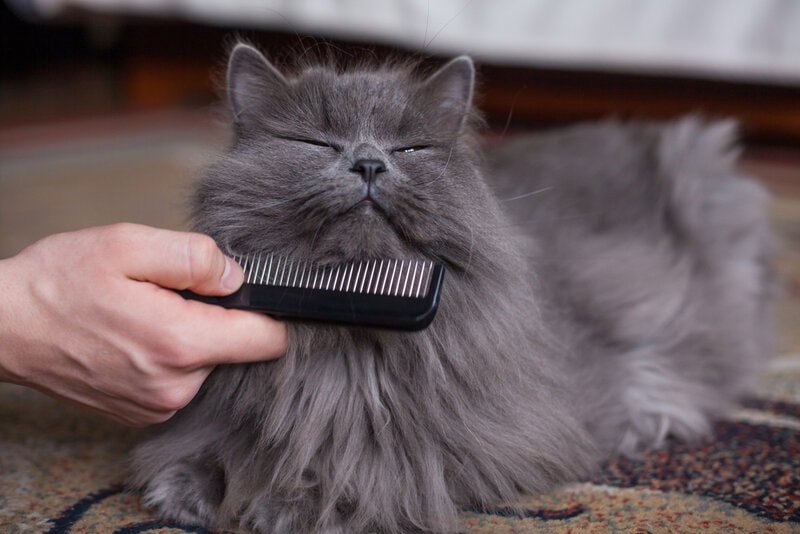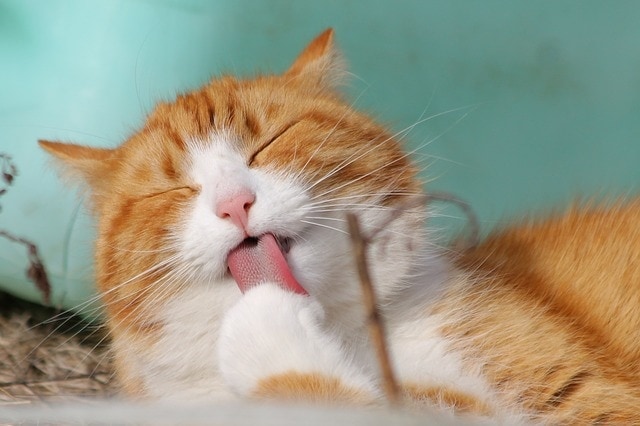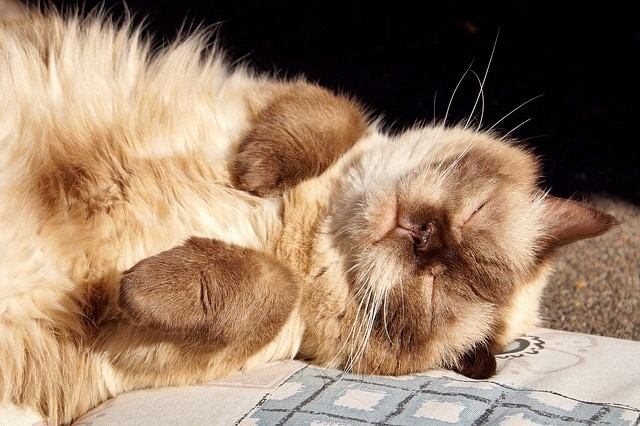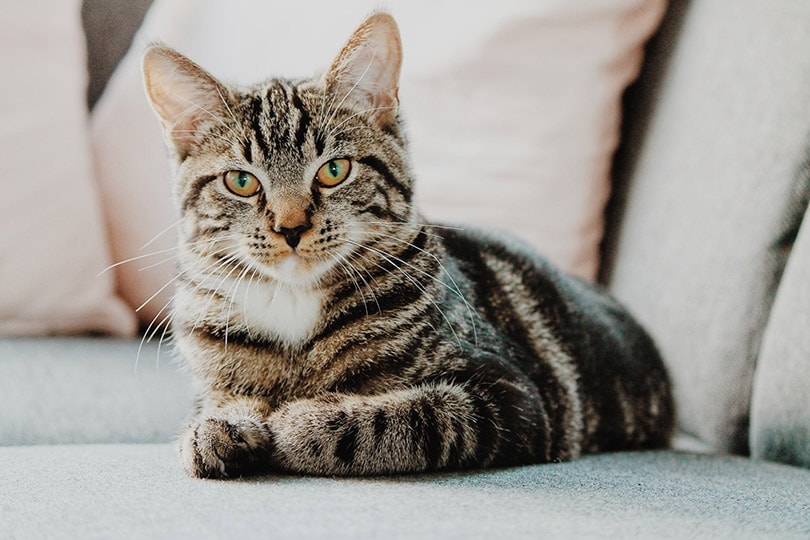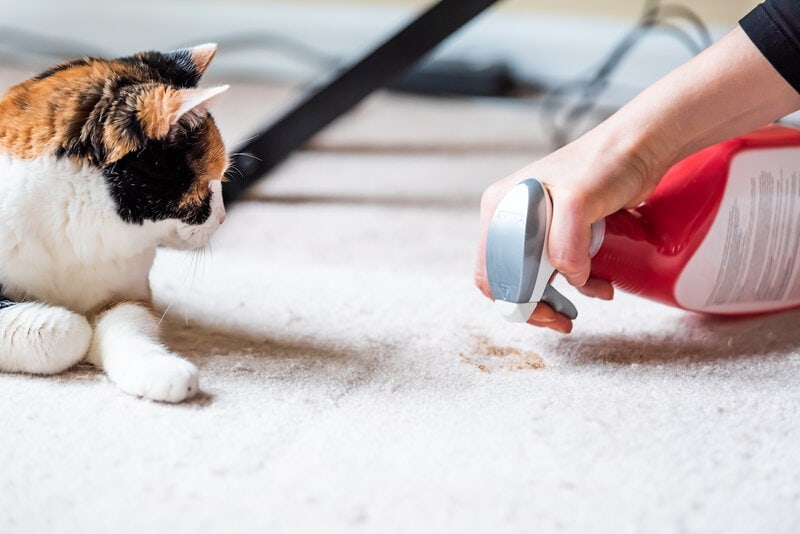There’s cat hair everywhere! With 40 million hairs covering a cat’s body at any one time, you can imagine why your favorite shirt, sofa, or bedspread gets buried under the fur. The one thing that almost all cat parents want to know is: How to remove cat hair?
We adore our cats, but unless you live with a hairless breed like a Sphynx or a low-volume shedder like a Bengal, you probably wage a constant struggle against encroaching cat hair. Not only is shedding a problem for the furniture, but it can be a serious health issue for our cats as well. Because cats ingest loose hair when grooming themselves, the animals’ digestion can become obstructed, causing them to cough up scary hairballs or to suffer from constipation. While a hairball every week or two is normal, cats can consume so much fur that the impacted, hairy mess has to be removed by a veterinarian.
What can you do to protect both your cat’s digestive tract and your living room furniture from cat hair?
Prevent Excessive Shedding
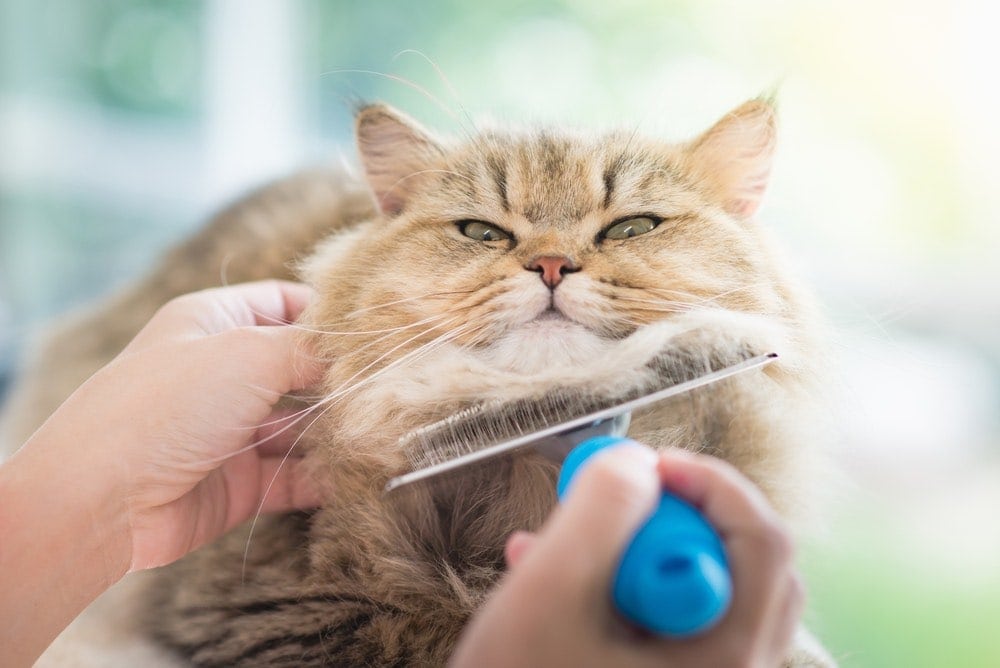
The best defense starts with a good offense, so solve shedding problems before they start. Select the right cat breed for you, and plan to groom your cat regularly and effectively.
- Are you still deciding which cat you’d like to live with? If cat hair is a big concern for you, consider a non-shedding cat such as a Cornish Rex or a Javanese. Short-haired cats like the darling Burmese could also be a good option.
- Invest in a cat brush such as a Furminator. Grooming your cat daily will remove loose fur from her coat, reducing hairballs and general shedding. Some cat companions also bathe their animals every month. While many cats object to water, others tolerate it or even enjoy it. If a bath is too much for your kitty, try rubbing him down with wet hands.
“Not only is shedding a problem for the furniture, but it can be a serious health issue for our cats as well.”
How to Remove Cat Hair from Clothes, Furniture, and Bed Linen:
At least 15 different household items can help you eliminate pet hair problems. If you own a pair of latex gloves, a lint roller, a cat brush, or even an inflated balloon, you already possess a valuable cat hair remover. Try out these handy objects:
- Latex gloves – Rub down your sofa or recliner using a pair of wet rubber gloves. Once the gloves are coated in the hair, rinse them off. It’s an inexpensive, simple, and effective solution to the problem of cat hair on the furniture. If you don’t have gloves, a sponge will work much the same way. We recommend spraying a mix of water and fabric softener on the upholstery before rubbing it down.
- Sticky stuff – Lint rollers, packing tape, and contact paper make great pet hair removers when applied to cloth-covered furniture and clothes. Mist your target items with an anti-static spray such as Static Guard to loosen the cat hair before you take it off with the lint roller.
- Reduce static cling – Cat hair is notoriously full of static. The famous inventor Nikola Tesla reportedly began his research into electricity and robotics when he noticed his cat’s coat bushing out with static. Dryer sheets control static. Toss your article of clothing into the dryer for ten minutes with a dryer sheet to help remove pet hair. These sheets also work well when cleaning baseboards, chair rails, and window frames.
- Furniture spray – When scouring hard surfaces, use an appropriate cleaning solution. For wood, select your favorite furniture polish and a soft cloth. For linoleum or tile, we recommend an environmentally-friendly, cat-safe option like white vinegar or baking soda.
- Vacuum – Don’t forget the most basic strategy of all—vacuum your rugs and upholstery. Dyson offers several excellent shop vacuums designed especially for homes with pets. Their products are a bit pricey but maybe worth the additional investment thanks to their exceptional suctioning power.
How to Keep Cats Away from Select Pieces of Furniture
Do you have a special couch, chair, or tablecloth you want to keep your cats away from entirely? As you know, a cat should never be punished for climbing on the furniture. You can, however, dissuade this behavior through some simple techniques:
- Cat repellent – Make your cat repellent. It’s a gentle, go-green way to discourage cats from climbing on the sofa. Most cat repellent sprays smell like rosemary and citrus—two scents cats abhor.
- Couch guards – Although created to deter dogs from climbing on sofas, a couch guard can also prevent cats from taking over your favorite furniture. Check out the different options to see which one might work for you.
- Furniture protectors – Safeguard your sofa and upgrade your living room’s style at the same time with a furniture protector such as one of these. Specifically made to keep furniture free from pet hair, muddy paws, and tiny claws, furniture protectors also add a splash of color to your home.
- Add a cat bed – A design-led, feline-friendly cat bed can make an attractive addition to your living room. Cat furniture can also take the brunt of your animal’s shedding while your sofa gets off the light.
Is your Cat’s Diet Contributing to a Hairy Situation?
A well-nourished cat will have a shiny, clean, and unmatted coat. If you are concerned about your cat’s appearance or if she is shedding more than you think she should, the diet may be the culprit. A healthy cat diet is about 45% protein and 25% to 35% fat. Omega-3 and omega-6 fatty acids are especially important for felines. Check your cat food’s ingredients, and if you are concerned, consider switching foods or adding supplements to your cat’s diet. Consult your veterinarian if your cat is developing bald patches or if she appears ill or distressed.
Conclusion
Although cat hair can be an annoyance, it’s not impossible to keep your cat looking great and your house (mostly) cat-hair-free.
What strategies have you tried for cleaning up cat hair? Do you have pointers on what works, and what doesn’t?
Share with us in the comments below.
Featured Image Credit: Jakub Zak, Shutterstock

